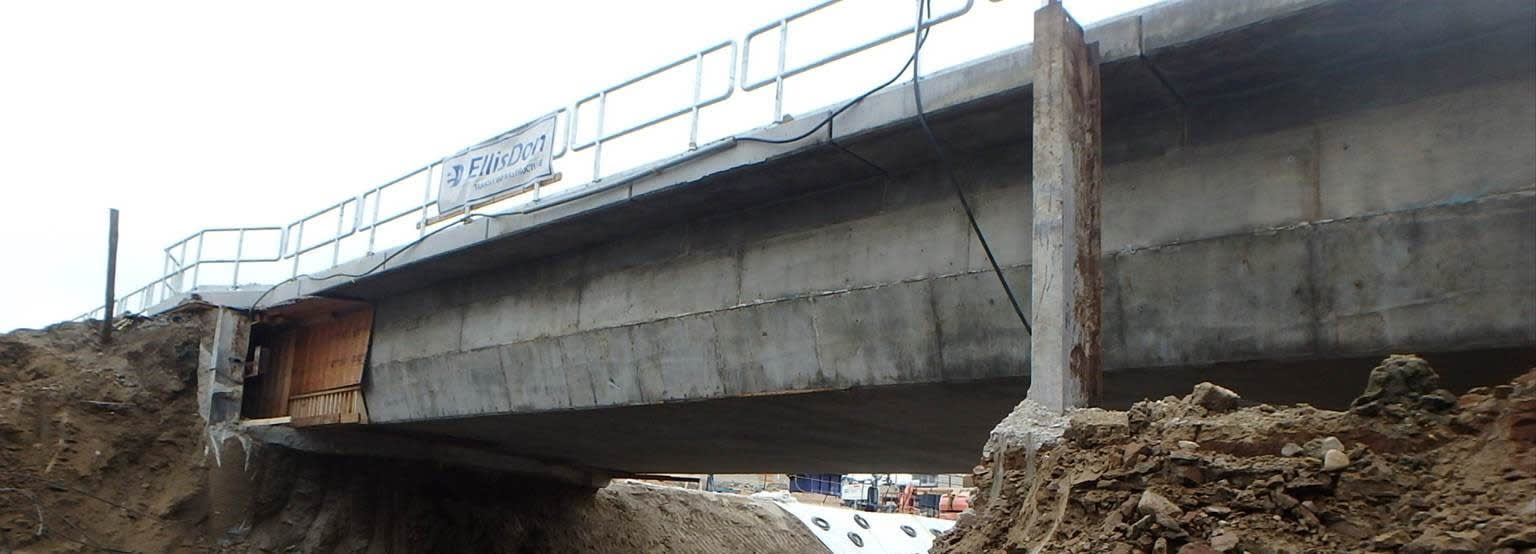See major breakthrough beneath Milliken GO rail bridge
Let’s take a closer look at the progress on the Steeles Ave East underpass and Milliken GO.
Nov 25, 2020
It’s not easy to hide a major rail bridge in Toronto.
But here’s how it was done – and how the expanse is now coming to light.
Metrolinx and EllisDon recently completed a major milestone for the Milliken GO Station – construction of a rail bridge which now carries GO trains. The rail bridge was built over the surface of Steeles Avenue East, using an uncommon method of ‘top-down’ construction. For passengers peeking out the window as they approach Milliken GO Station, they might wonder, “Where’s the bridge?” Until now, they wouldn’t know it was right under them.
A good look at the ‘top-down’ method. And that’s not snow to the right, but rather construction material. (Metrolinx photo)
Once the rail bridge deck was completed and trains were safely diverted onto the new track alignment, crews were ready to start excavating.
Heavy duty machines punched through the soil beneath the rail bridge, revealing the bridge deck, substructure piers and the area where cars will eventually travel on the lowered Steeles Avenue East to complete this ‘road under rail’ plan.
This first phase of excavation involved removing material from the south end of Steeles Avenue East. The materials under and around the bridge deck were maintained at a safe slope for operation and could only be removed once rail traffic was transferred onto the bridge deck.
After rail traffic was shifted onto the bridge deck, excavation of the final portion of material began on the east side of the rail bridge from Silver Star Boulevard. Along the trench on the west side, caissons – watertight chambers – were drilled into the earth and retaining walls were constructed, which then allowed for excavation to occur on the west side, simultaneously.
Two excavators, one positioned in the east quadrant – the yellow-orange one in image above – and one positioned in the west quadrant – the green machine – dug towards middle where the rail bridge is located. The two excavators then worked together to burrow from one side to the another, clear out the material and widen the cavity beneath the bridge deck.
A view of the rail bridge up close as excavators began to unearth the structure. (Metrolinx photo).
With this south portion removed, workers will be able to complete installation of a new 1350mm diameter watermain, a major utility installation milestone. The 1350mm watermain is a domestic water transmission line that is a vital component to the City’s water distribution system.
The water main will be lowered into a trench box and encased in concrete to protect the unit. Following this installation, the second phase of excavation will begin to unearth the existing water main beneath Steeles Avenue, which will then be removed and decommissioned. The second phase of excavation is scheduled to begin in early 2021, and once it is complete, the two south side driving lanes of the underpass will be graded and paved.
Here’s the construction by the numbers:
- A total of 270 cubic metres of soil was excavated beneath the rail bridge
- Over 270 caissons were drilled to build the retaining walls
- Over 450 cubic metres of concrete will be used to encase the new water main
The Steeles Avenue East underpass is but one component of the upgrades currently underway near the Milliken GO Station to support future all-day, two-way train service on the Stouffville line.
Curious to learn more about the excavation stages? Make sure to check out the infographic detailing the underpass construction process here.
Sign up to get updates by emailing TorontoEast@metrolinx.com.
by Teresa Ko Metrolinx communications senior advisor
